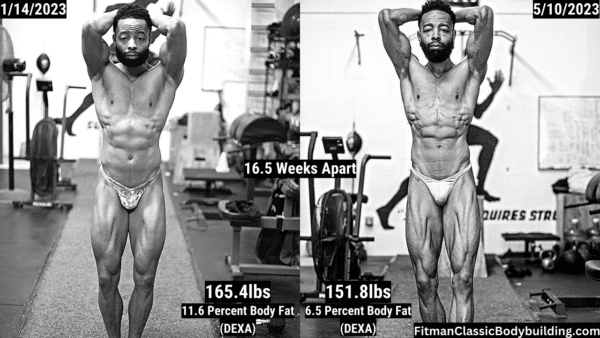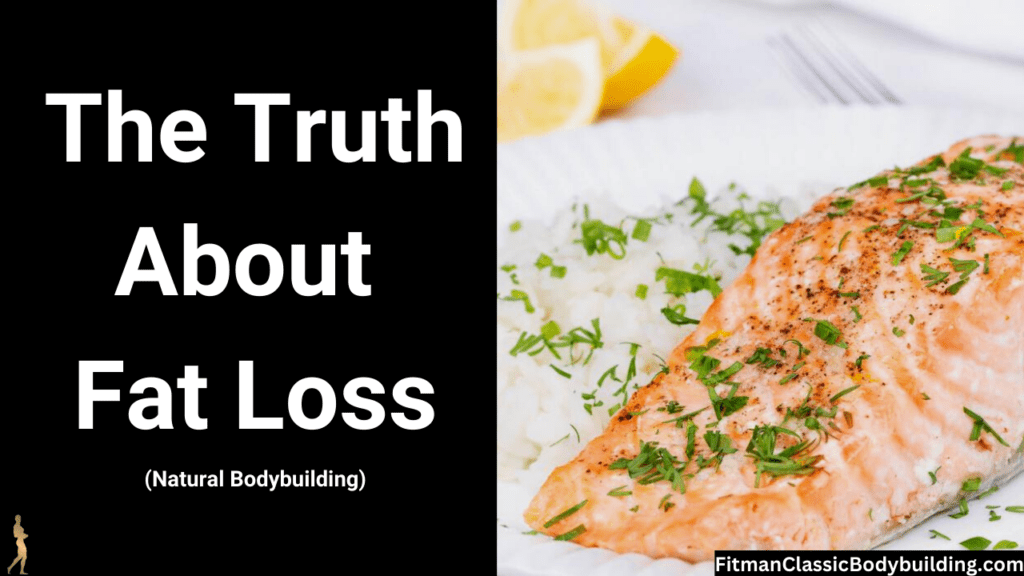The truth about fat loss has unfortunately gotten buried beneath many lies, myths, and fallacies.
There is a right and a wrong way to do anything in life, including how to lose body fat. The wrong ways to lose body fat would be things like:
• Setting yourself up on a ridiculous starvation diet
• Doing a ton of cardio every day
• Lifting light weights for high reps
• Believing that a specific type of diet (keto, carnivore etc.) is the only way to lose body fat
You will definitely lose weight doing a ton of low intensity cardio on a starvation diet. But a large portion of the weight will be muscle mass. You will ultimately end up a smaller version of your current self with no major changes in the appearance of your physique. To me that is an epic fail.
To that end, many natural bodybuilders struggle mightily when they are trying to drop body fat. In their quest to lose body fat, many of these natural bodybuilders begin to increase their training frequency, especially their cardio/conditioning. Doing this can serve them well as they will burn more calories on a daily basis.
But if that increase in training frequency is not combined with the proper diet, it’s guaranteed that they will not arrive at that beautiful house on Ripped Ave. They will actually end up on Smooth Ln, which is not where you want to be if you want to present your best physique on stage.
The Truth About Fat Loss: Energy Input And Output

When it comes to losing body fat or gaining muscle mass, the most critical part of the equation is your energy input vs. your energy output.
Increasing your energy deficit is the most powerful tool in the fat loss game. You can actually lose scale weight if you were in a caloric deficit while eating bad food. Some people have done it with Twinkies for iron’s sake! Now, your body will not look the best it could and you won’t feel great, but you can actually lose scale weight with that nonsensical method. I do not recommend it.
But a natural bodybuilder who is looking to build a great physique will not want to walk down that road. We are more concerned with our appearance in photos and the mirror vs. just the scale. The basic rules of creating an energy deficit versus a surplus are:
• If Tonya Thick is carrying extra body fat, but she wants to get leaner, she cannot consume more calories than she can burn on a daily/weekly/monthly basis. She has to be in a slight to moderate caloric deficit over time to drop the fat.
• If Sylvester Skinny wants to build more muscle mass he cannot burn more calories than he consumes on a daily/weekly/monthly basis. He has to be in a slight to moderate caloric surplus over time to build appreciable muscle mass.
A natural bodybuilder looking to get lean cannot eat like Homer Simpson and expect to look like Apollo Creed. The same natural bodybuilder looking to build real muscle also cannot eat like a hummingbird and expect to look like an ostrich.
Another truth is that a lot of folks who “eat clean” are still carrying much more body fat than they want to. I used to be one of these people because what I used to fail to realize is this: Even if your diet was full of clean, nutritious foods you would get stuck losing fat if your caloric intake was too high. If your caloric total is more than how many calories you burn in a day, you will be unable to drop body fat and vice-versa for gaining muscle.
I highly suggest you use an app like MyFitnessPal to begin to track your foods. You do not have to count calories forever, but getting an idea as to how much you eat makes reaching your fat loss goals significantly easier.
The Truth About Fat Loss: Macros Matter
All foods fall into 3 categories: Carbohydrates, Proteins, and Fats.
Carbohydrates, like rice and potatoes, provide the fuel needed for high intensity exercise such as sprinting and lifting. Protein, like beef and chicken, provide your body with the building blocks to build muscle and recover from training. Fats, like coconut oil and olive oil, help your body absorb vital nutrients and are your bodies’ primary energy source for low intensity exercise like walking.
To build a great physique your macronutrient split has to be on point. A sample macro split could look like this:
Total Daily Calories: 2000
Carbohydrates: 175g (35 percent of the calories)
Protein: 175g (35 percent of the calories)
Fat: 67g (30 percent of the calories)
Before we calculate the numbers, you need to know that 1 gram of carbs or protein is worth 4 calories and 1 gram of fat is worth 9 calories. As far as the calculations go, the breakdown for the macro split is below:
• For your carbs you would take the total number of calories (2000), multiply it by .35 and then divide that number by 4.
• Then for your protein you would take 2000, multiply it by .35 and then divide that number by 4.
• Finally, for your fat you would take 2000, multiply it by .3 and then divide that number by 9.
Now based on the goals you have for yourself the split can be adjusted. This split could be higher/lower in carbs or higher in protein, but a 35/35/30 split of carbs/protein/fats is a decent split for most bodybuilders to start with. Even if you are in a caloric deficit at 2000 calories a day, you still need balance with your macros in order to develop your best physique. Remember with bodybuilding the goal is not just pure scale weight loss.
If you are eating 2000 calories a day and 80 percent of the intake is sugary carbohydrates or low quality fats, what do you think your end result physique will be? I will tell you exactly what it will be: a soft and fluffy body. You might weigh less on the scale, but the scale does not determine success in the physique building game. Again, photos from all angles are the king when it comes to seeing progress with your physique.
You should also invest in a food scale and measuring cups to make counting your macros and calories easy and precise.
Conclusion
The truth about fat loss is pretty simple. It all comes down to the right caloric intake, a great macronutrient split, and eating healthy foods. If you consistently combine all three, you will be on the path to building a leaner and better body.
If you want or need professional help on constructing your diet in terms of macros, calories, and food choices, you can contact me directly.
I’ll holla at you next time.
The People’s Trainer
Fitman




[…] got started on your health journey today? What if today was your day 1 and you were consistent with your diet over the next year? And what if I told you that if you were a beginner that 60-90 minutes a week of following a basic […]
This was really informative. Liked the break down and the “quick math” about calories and macros!
Thanks for reading this article I appreciate it! The math will not lie to us💯.